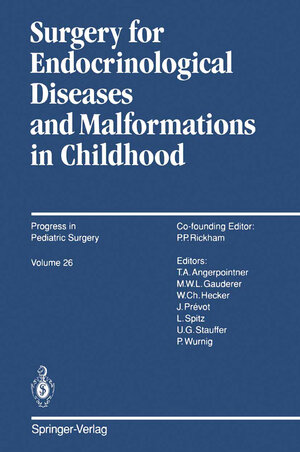
×
![Buchcover ISBN 9783642883262]()
Surgery for Endocrinological Diseases and Malformations in Childhood
herausgegeben von Michael W.L. Gauderer und Thomas A. AngerpointnerEndocrine conditions requiring surgical intervention in the pediatric age group are uncommon. When diagnosed, they are the source of great in terest and, often, considerable debate. This is understandable, since few centers and even fewer individual surgeons can draw on vast experience of this subject. The great divergence of opinion regarding management is also understandable in that pediatric endocrine lesions often differ considerably from their adult counterparts in histology, natural history and response to treatment. Pediatric endocrine lesions are also, as a rule, less frequently malignant. In addition to the great strides made in surgical and anesthetic technique and operative monitoring, progress in four areas has substantially advanced the management of endocrine dis orders in the pediatric age group in the last decade: imaging, pathology, pharmacology and genetics. The new imaging tools, ultrasonography, computed tomography and magnetic resonance imaging, have added great diagnostic possibilities. More recent developments, such as radio nuclide imaging for the adrenal gland and the possibility of using tagged antibodies, promise to expand our imaging horizons even further. In the field of pathology, the develop ment of immunocytochemical markers (e. g. , monoclonal antibodies), the refinement in special stains and the continuous perfection of fine needle aspiration biopsies offer great new diagnostic as well as research capabil ities. Newer pharmacological agents, such as the alpha and beta blockers, the calcium channel blockers and thyroxine analogs, add a whole new level of safety to the management of the potentially lethal pheochromocytoma.




